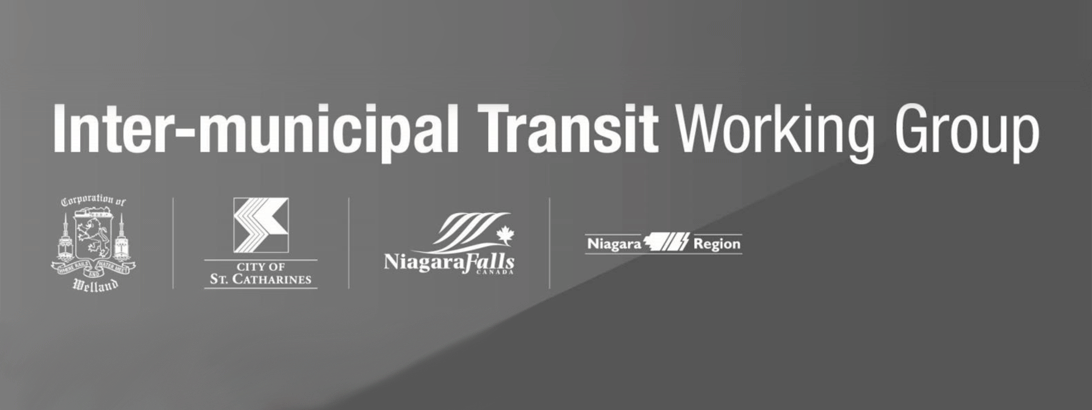Since January 2016, the Inter-municipal Transit Working Group along with Dillon Consulting has been developing options for an integrated transit system that works for all of Niagara.
Over the summer months the team has consulted with the business community and top regional employers, as well as service agencies and the health sector for their input into the future of inter-municipal transit in Niagara. Their feedback during these sessions showed strong support for cooperation and transit integration.
In August the consulting team presented a progress report to the Inter-municipal Transit Working Group with preliminary options for future service plans and governance models. The working group is continuing to work with the consulting team to refine these options with further details and financial implications.
The service plan and governance options presented by Dillon Consulting are intended to be fully implemented prior to or in conjunction with the arrival of GO rail service in Niagara, currently scheduled for 2023. The service plan consists of the following five primary elements:
- Elimination of duplicate services serving post-secondary institutions and expansion of off-peak services on key inter-municipal corridors. The optimization of existing Niagara Region Transit routes linking St. Catharines, Niagara Falls, and Welland with inter-municipal post-secondary funded routes connecting Brock University and Niagara College will reduce duplication of service along key corridors, which will result in a more efficient service. Savings in service hours is recommended to be reinvested back into the service to improve peak period frequency, extend evening service and introduce Sunday service. This will result in an improved, more reliable and expanded service offering for a minimal increase in revenue vehicle hours.
- Better integration with other municipal transit systems. Increased coordination with Fort Erie, Port Colborne, Niagara-on-the-Lake, Pelham, and WEGO transit systems.
- Service and fare-integration with GO Transit bus services on QEW Route 12 corridor.
It is recommended that negotiations take place with Metrolinx to initiate a service and fare integration strategy where Niagara residents can pay a Niagara Region Transit fare to travel by GO bus within the Region, with the Region subsidizing the difference from the regular GO fare. This avoids duplication of service between the existing GO bus route and a potential Niagara Region Transit Route and will provide a cost-effective link connecting Grimsby and Beamsville to St. Catharines and potentially Niagara College and Niagara Falls, utilizing an already existing service. - New Niagara-West inter-municipal transit link. Implement a fixed-route transit service connecting Grimsby GO Carpool Lot (and future Grimsby GO Rail station) to Smithville up to nine times daily.
- New dynamic transit services for low-demand areas. New on-demand services linking Wainfleet to Welland and Crystal Beach to Port Colborne. These dynamic services are pre-booked by customers and will run on a limited set schedule and be operated by Niagara Specialized Transit vehicles (if available) or by taxi providers. The service will only operate and be paid for if requested by passengers.
Taken together, these elements identify opportunities for immediate, short-term and long-term transit improvements that will improve local services, connect with regional services, and other modes of transportation.
At the same time, the group has been working with the transit managers of St. Catharines, Niagara Falls and Welland to make the existing Niagara Region Transit pilot the best it can be by continuing to make improvements to existing transit services for the benefit of current and future riders. A notable result of this focus is the introduction of new routes to service Brock University and Niagara College that started this September.
Next steps:
Dillon Consulting will present their final report on service delivery and governance options to the Inter-municipal Transit Working Group later this fall. It is expected that options will be put forward to local councils (St. Catharines, Niagara Falls and Welland as transit-providers) and Niagara Regional Council by the end of 2016. Additional public consultation will follow before decisions on the future direction can be made early in the new year.
Following the discussion and consideration by local councils, timelines for implementation of new services and structure will have to be considered and planned for, including legal and financial details, prior to implementation of new transit routes, fares and services.
We all agree that public transit and inter-municipal transit is vital for the future of our region and economic growth. It is a strategic priority of Regional Council and is an important strategic priority of our local city councils. Collectively the working group looks forward to presenting the options for improved transit in the near future and continuing to work together with our staff and transit managers towards full implementation.
The Inter-municipal Transit Working Group is led by the Mayors and CAOs from St. Catharines, Welland and Niagara Falls with support from the Regional Chair and Niagara Region CAO and technical staff. The group has been working in cooperation to find a preferred model for transit services in the region and has worked to continue to make improvements to the exiting Niagara Region Transit service during the pilot period.
Signed by,
Mayor Walter Sendzik
Mayor Frank Campion
Mayor Jim Diodati
Niagara Regional Chair |



